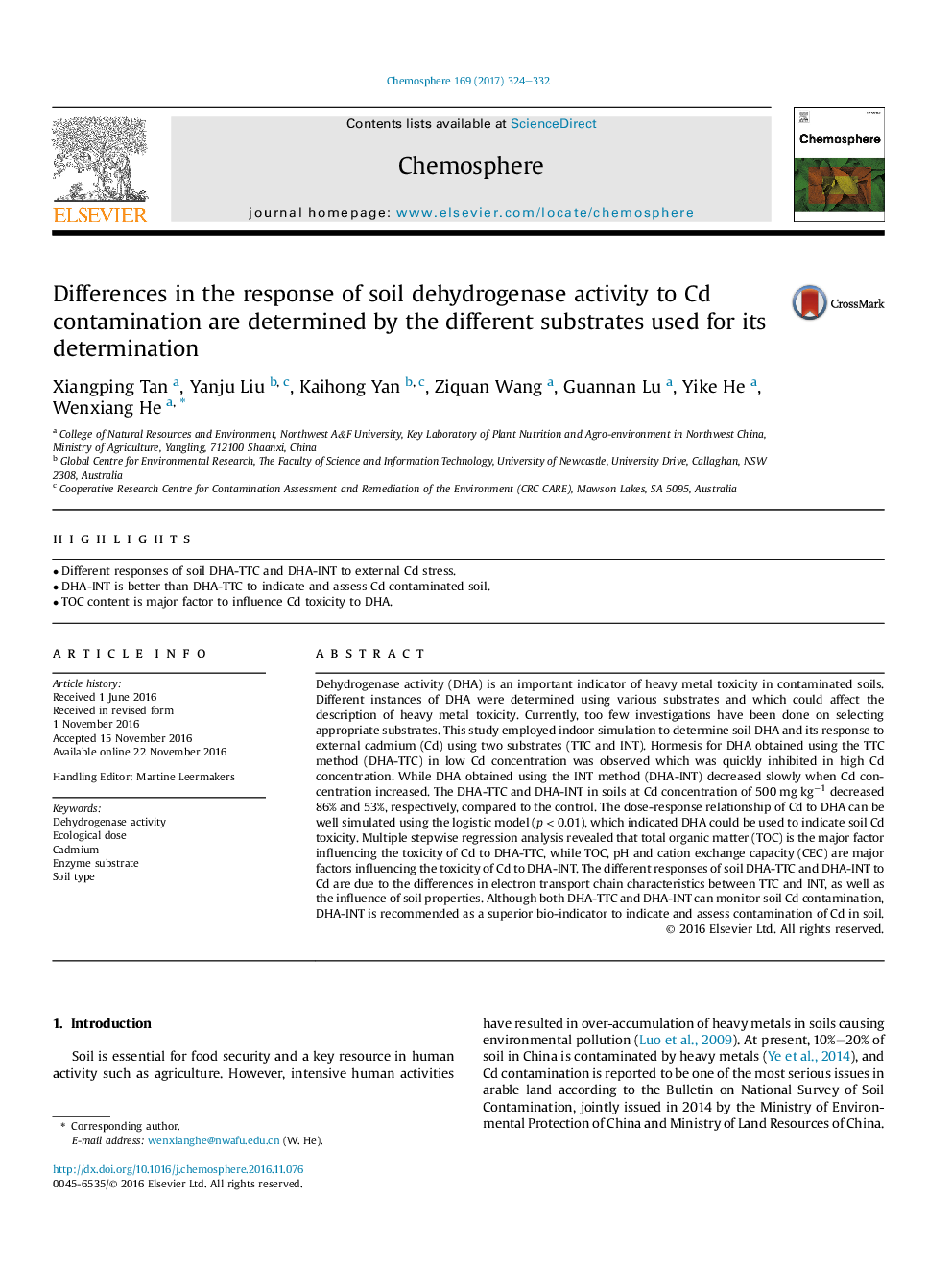| Article ID | Journal | Published Year | Pages | File Type |
|---|---|---|---|---|
| 5747018 | Chemosphere | 2017 | 9 Pages |
â¢Different responses of soil DHA-TTC and DHA-INT to external Cd stress.â¢DHA-INT is better than DHA-TTC to indicate and assess Cd contaminated soil.â¢TOC content is major factor to influence Cd toxicity to DHA.
Dehydrogenase activity (DHA) is an important indicator of heavy metal toxicity in contaminated soils. Different instances of DHA were determined using various substrates and which could affect the description of heavy metal toxicity. Currently, too few investigations have been done on selecting appropriate substrates. This study employed indoor simulation to determine soil DHA and its response to external cadmium (Cd) using two substrates (TTC and INT). Hormesis for DHA obtained using the TTC method (DHA-TTC) in low Cd concentration was observed which was quickly inhibited in high Cd concentration. While DHA obtained using the INT method (DHA-INT) decreased slowly when Cd concentration increased. The DHA-TTC and DHA-INT in soils at Cd concentration of 500 mg kgâ1 decreased 86% and 53%, respectively, compared to the control. The dose-response relationship of Cd to DHA can be well simulated using the logistic model (p < 0.01), which indicated DHA could be used to indicate soil Cd toxicity. Multiple stepwise regression analysis revealed that total organic matter (TOC) is the major factor influencing the toxicity of Cd to DHA-TTC, while TOC, pH and cation exchange capacity (CEC) are major factors influencing the toxicity of Cd to DHA-INT. The different responses of soil DHA-TTC and DHA-INT to Cd are due to the differences in electron transport chain characteristics between TTC and INT, as well as the influence of soil properties. Although both DHA-TTC and DHA-INT can monitor soil Cd contamination, DHA-INT is recommended as a superior bio-indicator to indicate and assess contamination of Cd in soil.
